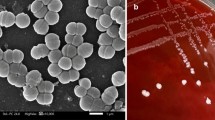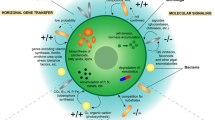Abstract
Sauerkraut is a traditionally fermented cabbage, with a unique taste and beneficial properties, in northeast China. The taste and flavor of sauerkraut vary from region to region, owing to the differences in microorganisms. Illumina MiSeq sequencing was used to identify and quantify the microbial community composition of the broth and leaves of the naturally fermented Suan-cai collected from northeast China. The alpha and beta diversity of the samples from three areas in Heilongjiang province shown that the complexity of bacterial diversity of the three samples was C, A and B in turn. The Lactobacillus widely existed in fermented sauerkraut, of these, Latilactobacillus sakei, Loigolactobacillus coryniformis subsp. torquens, Lactiplantibacillus plantarum subsp. plantarum, and Secundilactobacillus malefermentans were more abundant in the sauerkraut leaves than in fermentation broth. Other genera of lactic acid bacteria Pediococcus and Leuconostoc, which have potential probiotic properties, were also present. However, some harmful bacteria such as Arcobacter and Acinetobacter were also detected.





Similar content being viewed by others
References
Abdel-Rahman MA, Tashiro Y, Sonomoto K. Lactic acid production from lignocellulose-derived sugars using lactic acid bacteria: overview and limits. Journal of Biotechnology. 156: 286-301 (2011)
Barrangou R, Yoon SS, Breidt F, Fleming HP, Klaenhammer TR. Identification and characterization of Leuconostoc fallax strains isolated from an industrial sauerkraut fermentation. Applied & Environmental Microbiology. 68: 2877-84 (2002)
Behera SS, El Sheikha AF, Hammami R, Kumar A. Traditionally fermented pickles: how the microbial diversity associated with their nutritional and health benefits? Journal of Functional Foods. 70: 103971 (2020)
Biolcati F, Ferrocino I, Bottero MT, Dalmasso A. Short communication: high-throughput sequencing approach to investigate Italian artisanal cheese production. Journal of Dairy Science. 103: 10015-10021 (2020)
Cagno RD, Cardinali G, Minervini G, Antonielli L, Rizzello CG, Ricciuti P, Gobbetti M. Taxonomic structure of the yeasts and lactic acid bacteria microbiota of pineapple (Ananas comosus L. Merr.) and use of autochthonous starters for minimally processing. Food Microbiology. 27: 381-389 (2010)
Chao SH, Wu RJ, Watanabe K, Tsai YC. Diversity of lactic acid bacteria in suan-tsai and fu-tsai, traditional fermented mustard products of Taiwan. International Journal of Food Microbiology. 135: 203-210 (2009)
Dalmasso A, Soto Del Rio MdlD, Civera T, Pattono D, Cardazzo B, Bottero MT. Characterization of microbiota in Plaisentif cheese by high-throughput sequencing. LWT Food Science and Technology. 69: 490-496 (2016)
Demi̇r N, Savas K, BahçEci̇, Acar J. The effects of different initial Lactobacillus Platarum concentrations on some properties of fermeted carrot juice. Journal of food processing and preservation. 30: 352-363 (2006)
Guan QQ, Zheng WD, Huang T, Xiao YS, Liu ZG, Peng Z, Gong DM, XIE MY, Xiong T. Comparison of microbial communities and physiochemical characteristics of two traditionally fermented vegetables. Food Research International. 128: 108755 (2020)
Haque MA, Lee JH, Cho KM. Endophytic bacterial diversity in Korean kimchi made of Chinese cabbage leaves and their antimicrobial activity against pathogens. Food Control. 56: 24-33 (2015)
Hong SW, Choi YJ, Lee HW, Yang JH, Lee MA. Microbial community structure of Korean cabbage Kimchi and ingredients with denaturing gradient gel electrophoresis. J Microbiol Biotechnol. 26: 1057 (2016)
Jung JY, Lee SH, Lee HJ, Seo HY, Park WS, Jeon CO. Effects of Leuconostoc mesenteroides starter cultures on microbial communities and metabolites during kimchi fermentation. International Journal of Food Microbiology. 153: 378-387 (2012)
Jung JY, Lee SH, Jeon CO. Kimchi microflora: history, current status, and perspectives for industrial kimchi production. Applied Microbiology and Biotechnology. 98: 2385-2393 (2014)
Kim B, Seo WT, Kim MG, Yun HD, Cho KM. Metagenomic lactic acid bacterial diversity during Mulkimchi fermentation based on 16S rRNA sequence. Journal of the Korean Society for Applied Biological Chemistry. 55: 787-792 (2012)
Lee K, Lee Y. Effect of Lactobacillus plantarum as a starter on the food quality and microbiota of kimchi. Food Science and Biotechnology. 19: 641-646 (2010)
Lee M, Song JH, Lee SH, Jung MY, Chang JY. Effect of seasonal production on bacterial communities in Korean industrial kimchi fermentation. Food Control. 91: 381-389 (2018)
Li X, Yue XQ. Analysis of the microbiota in naturally fermented cabbage of northeastern part of China by high-throughput sequencing of the V3-V4 regions of the 16S rRNA gene. International Journal of Agriculture & Biology. 18: 1153-1158 (2016)
Ohshima C, Takahashi H, Insang S, Phraephaisarn C. Techaruvichit P, Khumthong R, Haraguchi H, Lopetcharat K, Keeratipibul S. Next-generation sequencing reveals predominant bacterial communities during fermentation of Thai fish sauce in large manufacturing plants. LWT - Food Science and Technology. 114: 108375 (2019)
Shang ZX, Ye Z, Li MQ, Ren HB, Cai SB, Hu XS, Yi JJ. Dynamics of microbial communities, flavor, and physicochemical properties of pickled chayote during an industrial-scale natural fermentation: Correlation between microorganisms and metabolites. Food Chemistry. 377: 132004 (2022)
Sun HJ, Zhang Y, Wang HY, Yang M, Yue XQ, WU RN. Microbial Diversity of Traditional Fermented Jinzhou Pickles. Food Science. 38: 15-19 (2017)
Vitali B, Minervini G, Rizzello CG, Spisni E, Maccaferri S, Brigidi P, Gobbetti M, Cagno CD. Novel probiotic candidates for humans isolated from raw fruits and vegetables. Food Microbiology. 31: 116-125 (2012)
Wang Z, Shao YY. Effects of microbial diversity on nitrite concentration in pao cai, a naturally fermented cabbage product from China. Food microbiology. 72: 185-192 (2018)
Wang DD, Chen G, Tang Y, Ming JY, Huang RQ, Li JY, Ye MZ, Fan ZY, Chi YL, Zhang QS, Zhang, WX. Study of bacterial community succession and reconstruction of the core lactic acid bacteria to enhance the flavor of paocai. International Journal of Food Microbiology. 375: 109702 (2022)
Wu JR, Yue X, Shi P, WU RN. Diversity of lactic acid bacteria involved in Suan-Cai using PCR- DGGE. Journal of Food Science & Biotechnology. 33: 127-130 (2014a)
Wu RN, Yu ML, Meng LS, Xu X, Yue XQ, Wu JR. PCR-DGGE analysis of the microbial diversity in naturally fermented Suan-cai from Northeast China. Modern Food Science & Technology. 30: 8-12 (2014b)
Yang XZ, Hu WZ, Xiu ZL, Jiang AL, Yang XY, Sarengaowa, Ji YR, Guan YG, Feng K. Microbial dynamics and volatilome profiles during the fermentation of Chinese northeast sauerkraut by Leuconostoc mesenteroides ORC 2 and Lactobacillus plantarum HBUAS 51041 under different salt concentrations. Food Research International. 130: 108926 (2020)
Zhang J, Wu SH, Zhao LH, Ma QL, Li X, Ni MY, Zhou T, Zhu HL. 2018. Culture-dependent and -independent analysis of bacterial community structure in Jiangshui, a traditional Chinese fermented vegetable food. LWT - Food Science and Technology. 96: 244-250 (2018)
Acknowledgements
Authors are grateful for the financial support from the National Natural Science Foundation of China (31601493), the Natural Science Foundation of Heilongjiang (QC2016024/LH2020C031), China Postdoctoral Science Foundation (2018M631901) and Postdoctoral Science Foundation of Heilongjiang Province (LBH-Z17012).
Author information
Authors and Affiliations
Corresponding author
Ethics declarations
Competing interest
The authors declare that they have no competing interests.
Additional information
Publisher's Note
Springer Nature remains neutral with regard to jurisdictional claims in published maps and institutional affiliations.
Rights and permissions
Springer Nature or its licensor (e.g. a society or other partner) holds exclusive rights to this article under a publishing agreement with the author(s) or other rightsholder(s); author self-archiving of the accepted manuscript version of this article is solely governed by the terms of such publishing agreement and applicable law.
About this article
Cite this article
Zhang, S., Zhang, Y., Wu, L. et al. Characterization of microbiota of naturally fermented sauerkraut by high-throughput sequencing. Food Sci Biotechnol 32, 855–862 (2023). https://doi.org/10.1007/s10068-022-01221-w
Received:
Revised:
Accepted:
Published:
Issue Date:
DOI: https://doi.org/10.1007/s10068-022-01221-w




